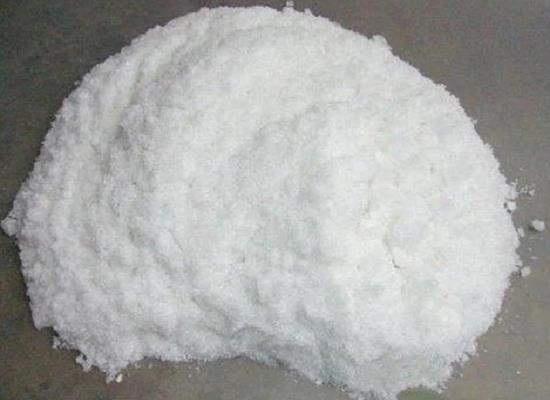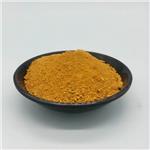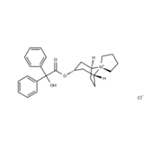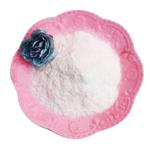Trospium Chloride: Therapeutic Efficacy, Dosage and Administration
Apr 9,2024
General Description
Trospium chloride, a medication used for overactive bladder, has demonstrated therapeutic efficacy in numerous clinical trials. At a standard dosage of 20mg twice daily, Trospium chloride consistently reduces urinary frequency, urge incontinence episodes, and urgency severity scores while improving voided volume. Studies show significant improvements compared to placebo, with early effects seen within a week. Trospium chloride enhances quality of life and urodynamic parameters, such as increased bladder capacity. Even lower doses have shown positive outcomes, especially in pediatric patients. Dosage adjustments are necessary for specific populations, and caution is advised for certain conditions. Understanding its anticholinergic effects on medication absorption and potential interactions is crucial for safe use. Overall, trospium chloride is a valuable option for managing overactive bladder symptoms, supported by robust clinical evidence.

Figure 1. Trospium chloride
Therapeutic Efficacy
Trospium chloride, a medication used in the treatment of overactive bladder, has been extensively evaluated for its therapeutic efficacy in numerous clinical trials. The standard dosage used in these trials is 20mg administered twice daily, and the results consistently demonstrate positive effects on urinary frequency, urge incontinence episodes, and urgency severity scores, as well as improvements in average volume voided per void. In placebo-controlled studies involving overactive bladder patients, trospium chloride showed significant reductions in urinary frequency, number of urge incontinence episodes, and IUSS scores compared to placebo. These effects were evident early in the course of treatment, with significant improvements observed after just 1 week of treatment. Additionally, the drug was associated with significant improvements in quality of life and symptom bother, particularly in female patients, as evidenced by Incontinence Impact Questionnaire scores. Furthermore, trospium chloride demonstrated positive effects on urodynamic parameters, such as an increase in mean maximum bladder capacity and bladder filling volume at the time of the first involuntary bladder contraction. These improvements were statistically significant and substantial, with approximately 60% of patients experiencing substantial improvement or complete relief of symptoms when treated with trospium chloride. In a small-scale study focusing on motor urge incontinence, trospium chloride at a lower dose (15mg administered three times daily) showed a significant increase in mean maximum bladder capacity compared to placebo. Moreover, in a dose-ranging study involving pediatric patients, trospium chloride recipients exhibited a dose-dependent increase in symptomatic improvement, with 82% of patients experiencing a positive therapeutic response. Overall, the therapeutic efficacy of trospium chloride is well-supported by clinical evidence, demonstrating its effectiveness in reducing urinary symptoms, improving urodynamic parameters, and enhancing quality of life in patients with overactive bladder. These findings underscore the role of trospium chloride as a valuable treatment option for individuals suffering from overactive bladder symptoms. 1
Dosage and Administration
Trospium chloride is prescribed for adults with detrusor instability or hyper-reflexia and associated symptoms like urinary frequency, urgency, and urge incontinence. The recommended dosage is 20mg taken twice daily before meals. In certain cases, such as in patients aged 75 and above experiencing anticholinergic side effects or those with severe renal impairment, the dosage may need to be reduced to 20mg once daily. This medication is not suitable for children under 12 years old and should be avoided in individuals with conditions like urinary retention, gastric retention, uncontrolled narrow-angle glaucoma, or those at risk of these issues. Patients with bladder outflow obstruction, ulcerative colitis, intestinal atony, myasthenia gravis, moderate or severe hepatic impairment, as well as pregnant or breastfeeding women, should use trospium chloride with caution. Due to its anticholinergic properties impacting gastric motility, the absorption of other medications may be affected when taken alongside trospium chloride. Furthermore, combining it with other anticholinergic agents can potentially intensify common side effects like dry mouth or constipation. It is essential for healthcare providers to consider these factors when prescribing trospium chloride to ensure safe and effective treatment. 2
Reference
1. Rovner ES. Trospium chloride in the management of overactive bladder. Drugs. 2004;64(21):2433-2446.
2. Sanctura™ (trospium chloride) 20mg tablets [prescribing information]. 2004; Troisdorf: Maduas AG.
- Related articles
- Related Qustion
- Trospium chloride: Biological action, Pharmacodynamics, and Pharmacokinetics Oct 31, 2023
Trospium chloride, a quaternary amine with anticholinergic properties, is used for the treatment of overactive bladder with symptoms of urge urinary incontinence, urgency, and urinary frequency.
Trospium chloride
10405-02-4You may like
Trospium chloride manufacturers
- Trospium chloride
-

- $55.00 / 1kg
- 2024-05-10
- CAS:10405-02-4
- Min. Order: 10kg
- Purity: 0.99
- Supply Ability: 20tons
- Trospium chloride
-

- $0.00 / 1KG
- 2023-11-27
- CAS:10405-02-4
- Min. Order: 1KG
- Purity: 99%
- Supply Ability: 20 TONS
- Trospium chloride
-

- $10.00 / 1kg
- 2023-07-26
- CAS:10405-02-4
- Min. Order: 1kg
- Purity: 99%
- Supply Ability: 1000tons




